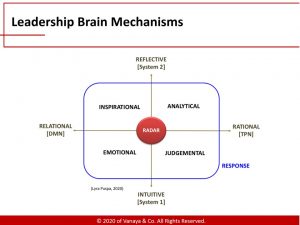
As business coaches and mentors, my colleague Margaret Armitage and I are often asked by clients and contacts “what are you seeing ‘out there?’.” Over the past 6 months of our shared Covid-19 winter in Australia, we have lost count of how many times this question has been asked.
Our response feels somewhat ‘bi-polar.’ It all depends on what lens you see the world through and how you interpret that input. We do see the tough side of how some businesses are not coping well, but in the main we are experiencing and seeing positive outcomes.
Part of the reason for this is that, as generally positive people, we tend to attract clients who are optimistic by nature, are open to learning and growth, possess a ‘on-purpose’ mindset, and have a creative ‘open’ quality about them.
When I shared this observation with a client last week, her response was “So I guess you’d call yourself a ‘glass half full’ person, then?” My response: “Well that depends…”
I find the “glass half full/empty” analogy problematic as it never really considers CONTEXT. And context determines (consciously or unconsciously) so much.
With respect to the glass, we must consider its purpose. What is the glass for? If it is for beer, then for a beer enthusiast, half full OR half empty is not a good situation – it’s only a half a glass of beer. If it is half full it will be too full for a red wine lover. And if cognac is your thing, then the glass is most certainly over full – even at half.
You can apply the same logic to most things. When it is raining, is that good or bad weather? It’s great if you are on the farm and need rain, and not so great if you promised the kids a camping weekend! In the end it’s a judgement call on a situation, and in the same way we judge anything as ‘good’ or ‘bad,’ our attitude and perspective/context dictates the outcome.
The “glass half full/empty” concept is often used as an analogy to describe a person as being either an optimist or a pessimist. Australian research just released by the QIMR Berghofer Medical Research Institute shows a link between pessimism about the future and a greater risk of dying earlier. It showed that, on average, participants who scored higher on pessimism were likely to die two years earlier than optimists. Interestingly, a highly optimistic perspective did not show extended life expectancy above the average life expectancy.
Regardless, what I take out of the research is that while you may not live longer than average by adopting a positive/optimistic attitude towards life, business, and the world at large, it certainly doesn’t hurt. And when we work with positive, and optimistic business owners, we witness incredible creative energy that spins off opportunity and a sense of Agency (refer to Margaret’s blog last week) and certainty in a world that for others seems out of control.
It’s time to stop thinking about how bad (or in some cases, good) the whole Covid-19 situation is – enough energy is wasted there already. Instead, if we simply acknowledge that it is what it is and ask how we can make the most of it, then we can begin to see a way out.
So what are we seeing out there? We are seeing optimistically minded business owners making lemonade from a pretty bitter lemon. Among other things we see them:
- Redefine their businesses, seeing growth in new markets that were unavailable to them only 4 months ago.
- Learn more about themselves and their personal relationship with “change” and “risk,” often surprising us with bold moves to expand when competitors have shuttered up.
- Take stock of Covid-19 Lockdown #1 – learning and determining what they will take forward, leave behind, or adapt if and when Covid-19 Lockdown #2 occurs.
- Be real about the situation – not being over-optimistic and betting on a cure-all vaccine by Christmas (although wouldn’t that be great), instead, they are pragmatic and prudent in their planning for what may be.
Above all they are not waiting for a ‘new normal’ to form. They are pro-actively creating, defining, and shaping the new normal for themselves and their businesses.
What are you seeing out there? What have you heard? What have you learnt?
We would love to know…
Are you waiting for a ‘new normal’ to form or are you pro-actively creating, defining, and shaping a new normal for yourself and your business?
If you belong to the optimists doing the latter, then please join us on 21st August at 9am WST with other business leaders and owners for a Zoom conversation to discuss what we’ve collectively learned, what we take forward, leave behind, and how we Find a New Balance.
Join us to Find a New Business Balance, click here to register now.






